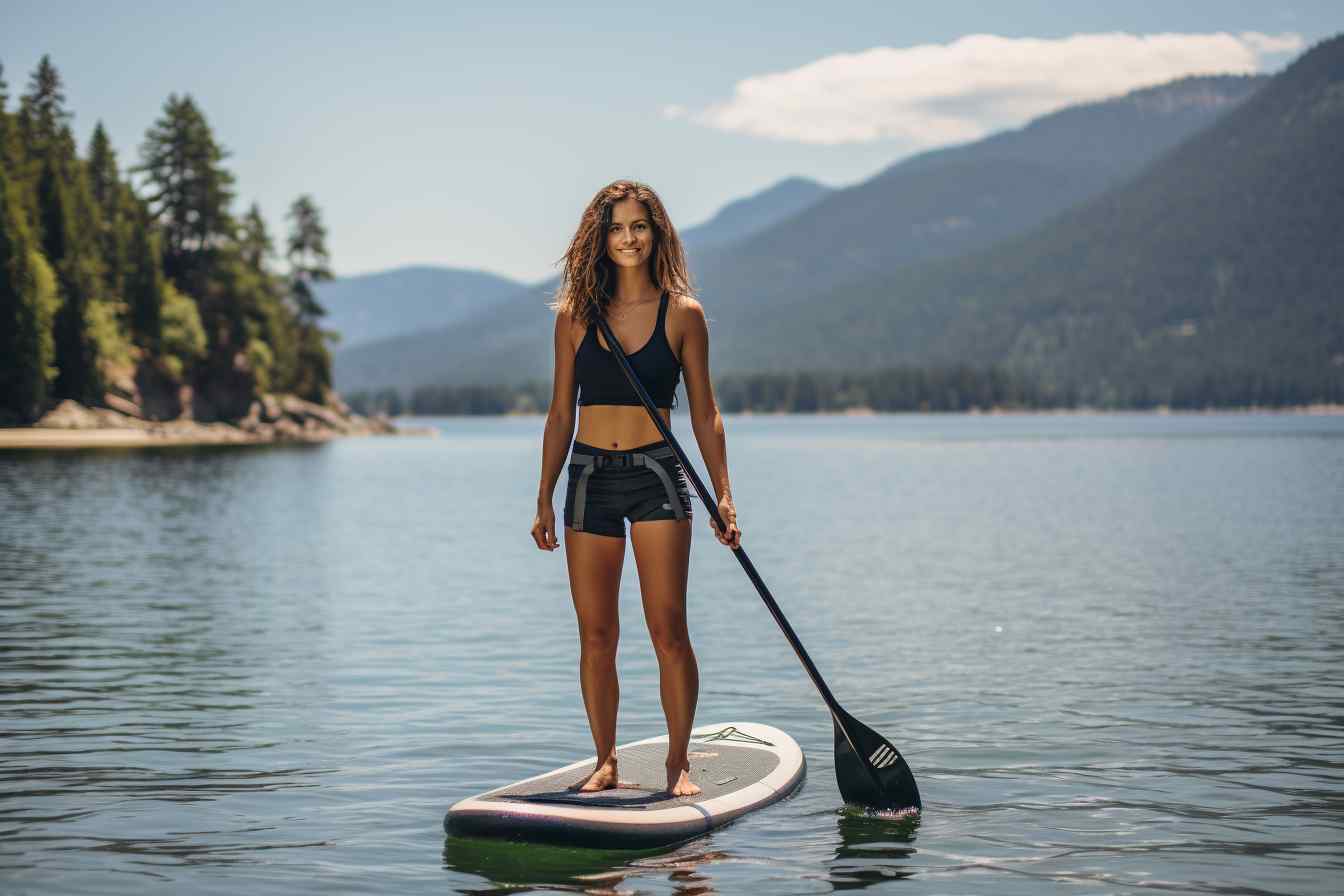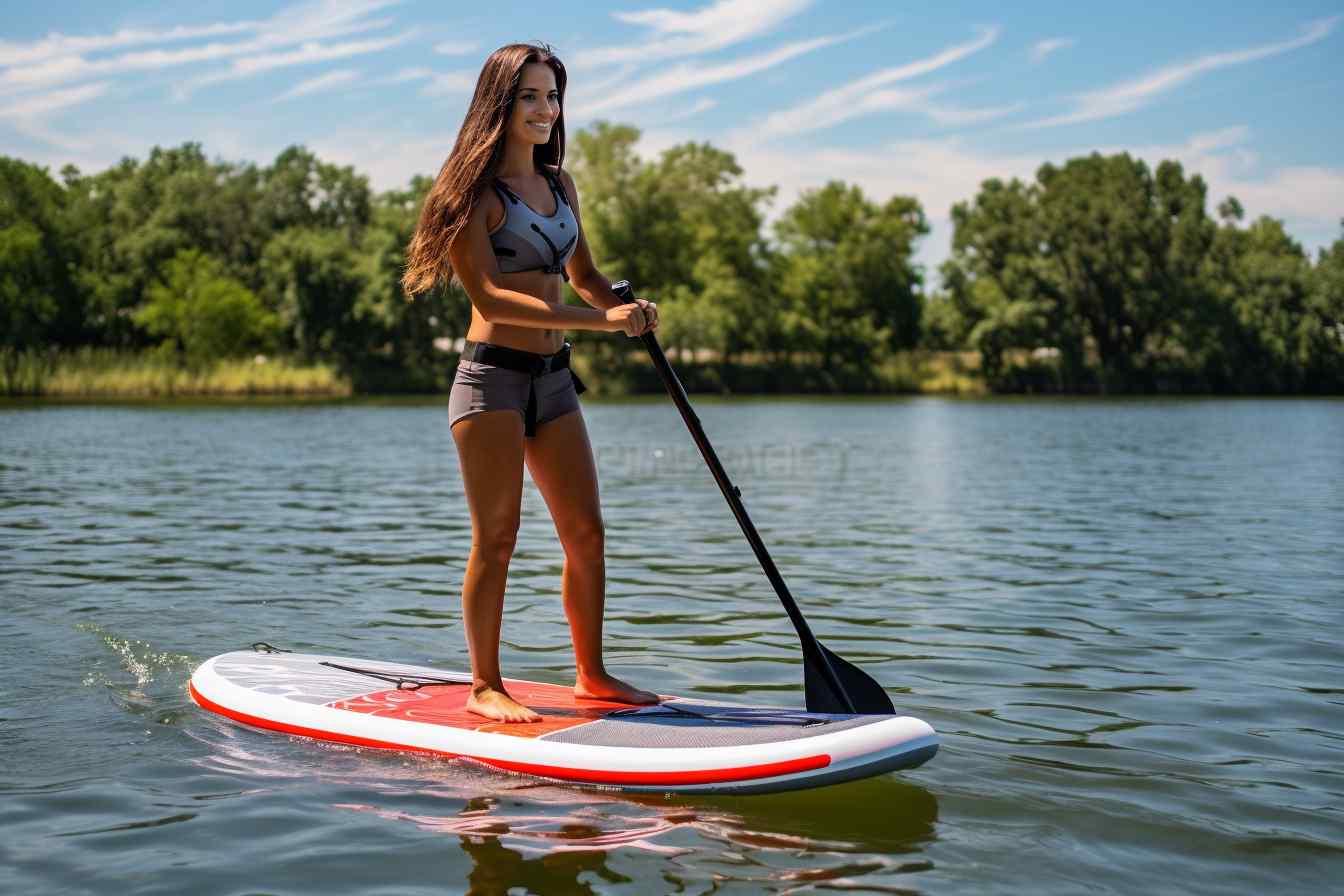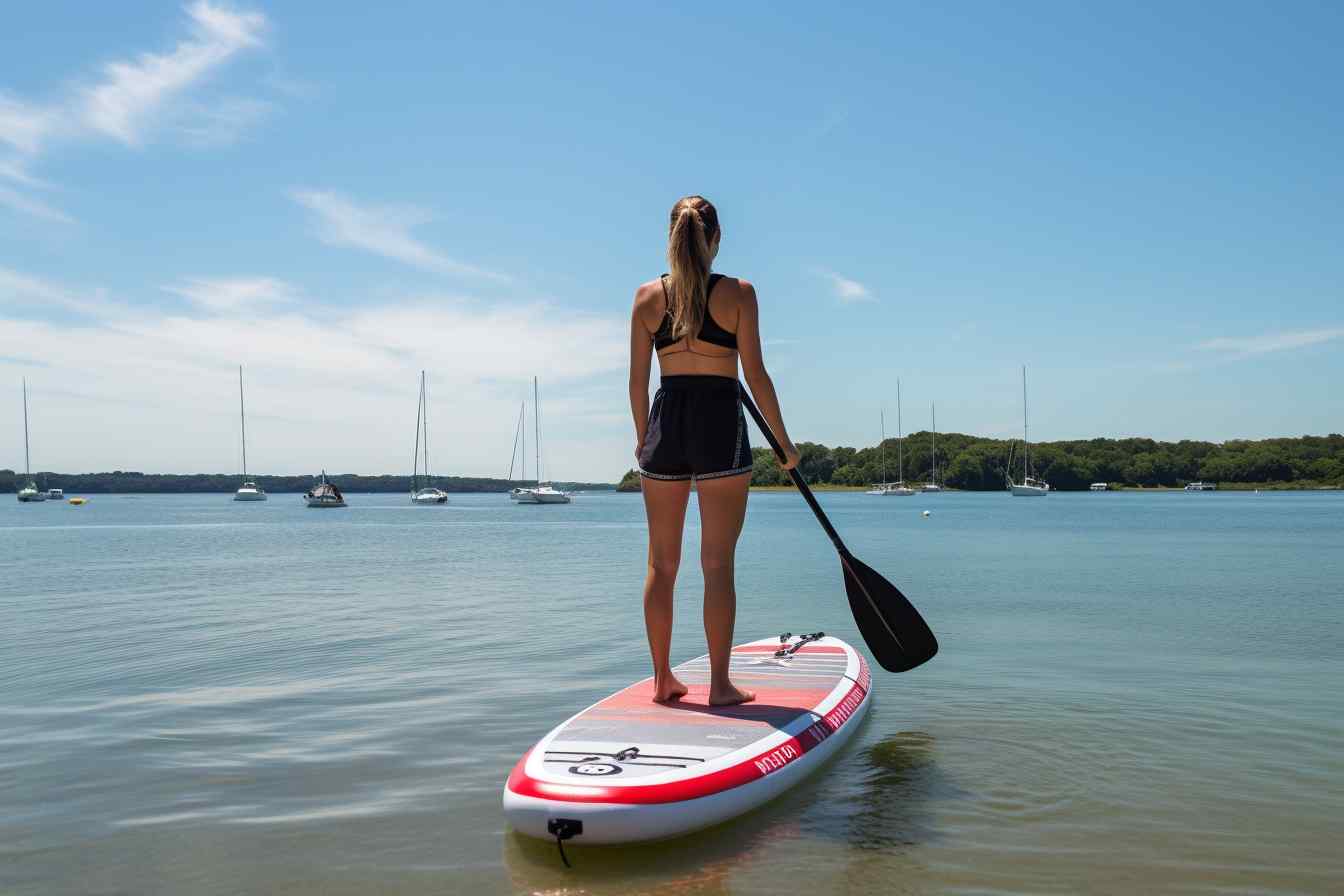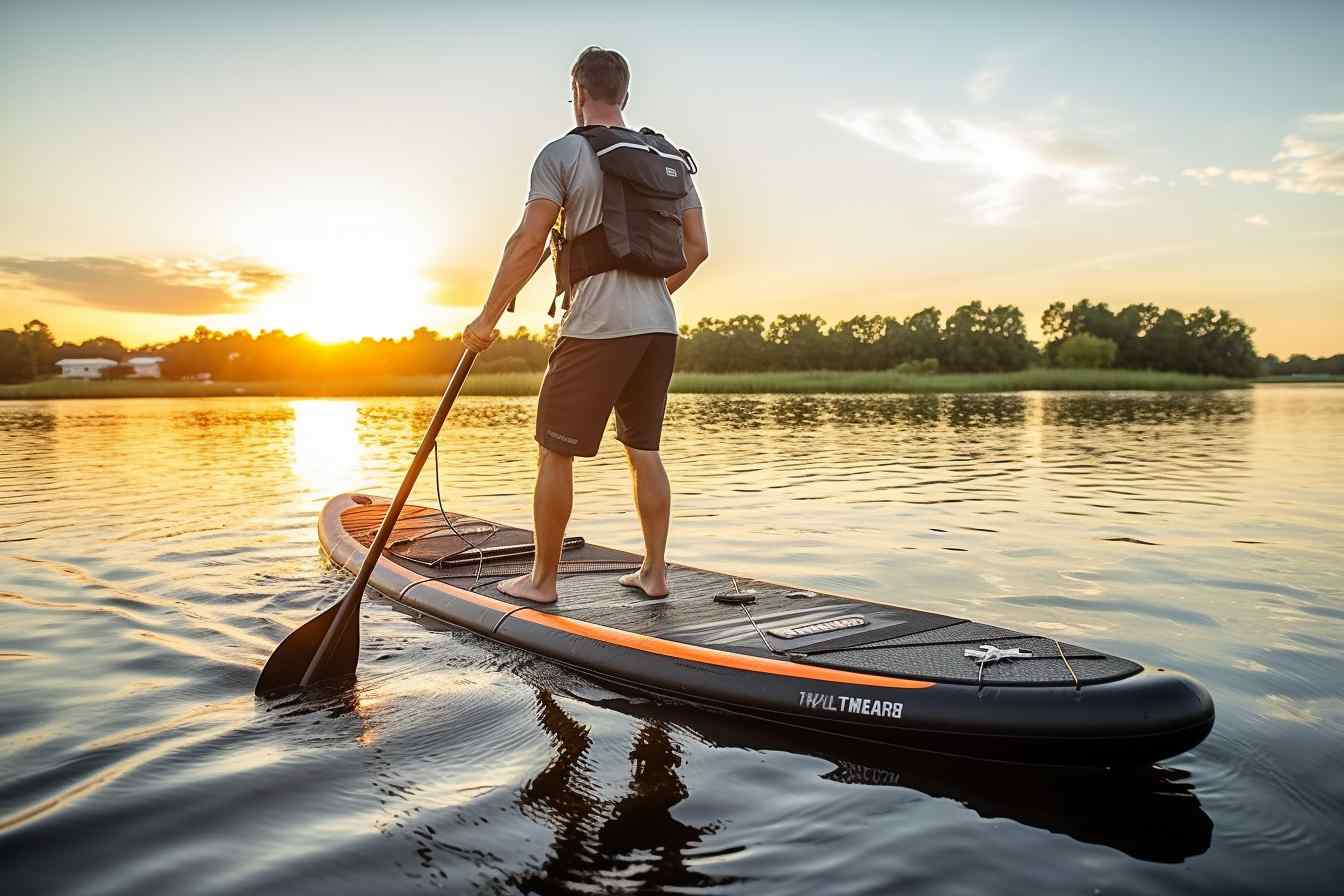Uncover the Ultimate Guide to Buying Your Next SUP

Summary
- Intro: Things You Need To Know Before Buying Your Next Sup
- What To Know Before Buying A Sup Board?
- What To Think About When Buying A Sup?
- What Are The Four Golden Rules Of Getting On Your Sup?
- How Do I Know What Paddle Board To Buy?
- Final Verdict
- Frequently Asked Questions
- What’s the deal with SUP board lengths?
- Can weight capacity on a SUP really make or break my ride?
- How do I pick between a solid and an inflatable SUP?
- Is there a SUP shape that’s best for beginners?
- What’s the secret to a killer paddle choice?
- Does board width make a big difference?
- What about those fancy SUP extras—worth it?
- Does the fin setup on a SUP matter?
- Any tips for storing and maintaining my SUP?
- What’s the smartest way to transport my SUP?
- Will a warranty or return policy affect my SUP purchase?
- Frequently Asked Questions
Intro: Things You Need To Know Before Buying Your Next Sup

So, let’s dive right in and talk about what’s crucial before you snag your next SUP—it’s not just about floating and paddling away, you know. First off, you gotta consider the type of SUP you’re after. Are you looking to catch some gnarly waves, or are you more about leisurely cruising along a peaceful lake? Your choice really boils down to where and how you plan to use it. Oh, and let’s not forget about the materials. These bad boys come in a variety of construction types—from solid to inflatable. Each has its pros and cons, no doubt about it.
Now, speaking of size, it’s not just about whether it’ll fit in your garage. You gotta think about the length, width, and thickness. These dimensions are key to finding the right balance between stability and maneuverability. If you get it wrong, you might as well be trying to stand on a log in the middle of a river! And hey, don’t ignore the weight capacity. It’s easy to overlook, but seriously, it can make or break your SUP experience. Make sure your SUP can handle your weight, plus any gear you plan to bring along.
As for the extras—well, they can be tempting. Deck pads, bungees, handles—you name it. They add comfort and convenience, sure, but they also add to the price tag. Keep that in mind before you fall head over heels for those fancy accessories.
Finally, I gotta mention this one last crucial tip: Try before you buy, if you can. Nothing beats the real feel of a SUP beneath your feet. It’s like finding a glove that fits just right—you’ll know the perfect SUP for you as soon as you step on it. Alright, ready to paddle out there and find your match? Remember these tips, and you’ll be gliding over water in no time.
What To Know Before Buying A Sup Board?

Let’s dive right in, shall we? Deciding on a SUP board can feel kinda like choosing a new friend—it’s a commitment, and you want to make sure you jive together. First off, you’ve got to consider what you’re aiming to get out of this adventure. Are you looking to catch some waves, explore serene lakes, or perhaps do a bit of yoga at sunrise? The activity dictates the board type, be it all-round, touring, or maybe even a racing SUP.
Now, I can’t stress this enough—size matters, guys. And I’m not just talking length, but also width and thickness. They play a huge role in stability and how the board handles. Trust me, you don’t wanna end up with a board that’s more wobbly than a toddler’s first steps. The volume and weight capacity are crucial, too. You want a board that floats you without a hitch, so check these specs based on your weight and the gear you’ll carry.
Materials are another biggie. Not all SUP boards are created equal. Some are inflatable, perfect for those with little storage space or who love to travel. Others are solid, offering a sturdier feel on the water. But remember, every choice has its trade-offs in terms of durability, performance, and price.
And speaking of price, let’s talk budget. Be prepared to fork out more dough for higher quality. Also, bear in mind the accessories—paddles, leashes, life vests. Those extra expenses can add up quicker than a squirrel on a feeder! So do your research, maybe even chat with a seasoned paddler or two. After all, you want your SUPing experience to be as smooth sailing as possible, right?
Should I Buy A Paddle Board
Alright, let’s dive right into this paddleboarding conundrum. You’re thinking of getting a SUP and wondering if it’s the right move, huh? Well, stick with me and we’ll sort through the nitty-gritty.
- Understanding the Types of SUPs: Just like with shoes, one size doesn’t fit all when it comes to SUPs. You’ve got all-around boards, touring boards, and even those nifty yoga-specific ones, each with its own quirks and features.
- Material Matters: They’re not all made of the same stuff! I mean, you’ve got your solid boards, which are super sturdy, and inflatables that are just so dang convenient to tote around.
- Size and Weight: Think about where you’ll be paddling. Gotta match the board to your bod and the waters you’ll be slicing through—bigger boards for the big guys and gals, or smaller ones if you’re not hauling so much.
- The Price Tag: Oh, boy, these things can swing from “That’s a steal!” to “Is this made of gold or what?” Set a budget beforehand, and stick to it like glue, but remember—quality does cost.
- Additional Gear: Don’t forget—it’s not just the board! You’re gonna need a paddle (duh!), maybe a leash (for when things get wild), and a life vest (cause safety’s no joke).
- Where to Buy: Options, options everywhere! From your local sports shop to the vast ocean of online stores, gotta scout out the best spot with the best deals.
- The Test Run: If you can, give it a whirl before committing. Some shops might let you take a board for a spin, and that’s like gold! You wouldn’t buy a car without a test drive, right?
- Storage Space: It’s a bummer, but SUPs don’t deflate like a birthday balloon after the party. Consider where you’ll keep this bad boy when it’s not living its best life on the water.
- Maintenance and Care: These puppies can last if you treat ‘em right. Rinse off the salty brine, keep it out of the sun when it’s off duty, and repairs—don’t let those go, or you’ll be up the creek without a paddleboard.
- Resale Value: And here’s a kicker—what if you want to sell it later? Some brands hold their value like a treasure chest, so think about the long-haul economics.
Remember, getting a SUP is more than just grabbing the first board you see. It’s about finding the one that makes your heart skip a beat every time you head to the water. So, take your time, consider the options, and get ready to join the ranks of the paddleboarding aficionados!
What To Think About When Buying A Sup?

Ah, so you’re in the market for a SUP (stand-up paddleboard), huh? Great choice! These beauties offer a killer workout, not to mention the pure joy of gliding over the water. But hold your horses; you can’t just grab any old board and hit the waves. No, sir. There are a few nuggets of wisdom you should consider before you make your purchase.
First off, think about what you’ll be using it for. Leisurely paddles on a calm lake, or are you aiming to catch some waves? There’s a different SUP for every activity, you see. If it’s tranquility and stability you’re after, a larger, wider board will do you solid, keeping you afloat nicely. But for the thrill-seekers dreaming of riding those swells, you’ll want a shorter board to maneuver the surf.
Now, don’t forget about the material. Can’t have your board buckling after a few goes, can we? Solid SUPs are typically made from a foam core encased in fiberglass and epoxy – durable and lightweight, they are. But, if you’re tight on space or you’re always on-the-go, an inflatable one might be your ticket. Just bear in mind, they can be a tad less rigid.
Lastly, there’s the moolah aspect – the price tag. There’s no way around it; SUPs aren’t always cheap. However, think of it as an investment in your happiness and health. Just be sure to sidestep the dirt-cheap options. They might seem like a bargain, but they tend to be about as sturdy as a house of cards in a stiff breeze. Remember, you get what you pay for.
In the end, it’s about weighing up what matters most to you. Whether it’s stability, agility, durability, or cost, mull it over before you part with your hard-earned cash. After all, a smart buy means more time enjoying your SUP and less time wishing you’d chosen differently. Happy paddling, my friend!
What Are The Four Golden Rules Of Getting On Your Sup?

Ah, stepping onto a SUP can feel like walking on water – if you’ve got a knack for it, that is. But let’s not get ahead of ourselves. The first golden rule of boarding your SUP? Balance, balance, and, dare I say, balance! You’ve got to keep your feet planted squarely, shoulder-width apart. Picture yourself as a tree, rooted firm and steady, right in the middle of the board. Bend those knees a tad for shock absorption, especially if the water decides to throw a little dance party beneath you .
Now onto the second commandment – gaze at the horizon, folks. Resist the temptation to ogle your beautiful feet or the glimmering water. Why’s that important? Well, fixing your eyes straight ahead is the secret sauce to maintaining equilibrium. It’s just like life; keep your eyes on where you’re headed, not down at your hurdles!
Third, paddle like you mean it. A strong, solid stroke slices through the water and propels you forward. Plant that paddle close to the board, and voilà, you’re cutting through the blue like a hot knife in butter. It’s about precision, my friend, not just brute strength.
Last but not least, it’s the art of falling. Yes, you heard me right. Learn to take the plunge with grace — Falling off? Aim away from the board. It’s a skill to master, really, ‘cause let’s be honest, who wants a bruise as a souvenir from a SUP adventure? Plus, it’s about getting back on with as much poise as you fell off with. Consider it a rite of passage; fall off seven times, stand up eight, and all that jazz.
How Do I Know What Paddle Board To Buy?
Alright, so you’re in the market for a new SUP, and you want the inside scoop? I get it – picking the right paddle board can feel like a bit of a minefield with all the options out there. Here’s the lowdown, from one water enthusiast to another.
Well, for starters, think about what kind of water baby you are. Do you fancy still waters that mirror the sky, or are you all about those crashing waves? Your choice of paddle board needs to reflect that. If you’re into serene lakes and gentle rivers, a flatwater board is your go-to; it’s designed for stability and smooth sailing. However, if you’re craving that surf, opt for a shorter, more maneuverable board.
Material matters too – are you the kind of person who wants a board that’ll last through the ages and can take a few knocks? Go for a solid board. They’re typically more durable but remember, they can get heavy. Inflatables, on the other hand, are a breeze to carry and store, making them perfect for the adventurer on the go. Yet, they might not have the same longevity as their solid siblings.
Size is significant as well – it’s all about balance and comfort. If you’re a tall drink of water or the incredible hulk type, make sure you snag a board that can support your weight and has enough deck space.
Lastly, don’t forget about the fins! They’re not just there for show; they impact your control and stability on the water. Smaller fins are fab for flexibility and turns, while larger ones give you a straighter ride and better tracking.
So there you have it. With all that in mind, you’re set to choose your perfect SUP companion. Happy paddlin’!
Final Verdict
Oh boy, picking the right SUP (Stand Up Paddleboard, for those out there who might be scratching their heads) can feel like wading through a swamp of options, can’t it? You’ve got your eye on that sleek beauty, but hold your horses! Before you pull the trigger on your shiny new water steed, there are a couple of nuggets of wisdom you’ll want to pocket.
– well, that’s the meat and potatoes, isn’t it? It’s the drumroll moment before you make your big purchase. Can’t deny the little flutter in your stomach when imagining gliding over the water, the early mist parting like some sort of aquatic royalty. But emotions aside, think practicality. It’s easy to get swept away by flashy features or bold designs, but your SUP should fit your lifestyle like a glove. You’re not just buying a board; you’re investing in experiences, in memories! So, if you’re a chill lake lounger, maybe skip the race-tuned torpedo. And vice versa, if you’re itching for speed and competition, a yoga board might not cut it.
Consider the nitty gritty, too—like, how are you going to lug this beast around? Portability’s a biggie. And storage? You don’t want your new buddy hogging all your living space. Think about the hull type, the length and width, and how that plays into stability and tracking in the water. Or how about construction and materials? They’ll dictate durability and performance. And let’s not forget that the paddle itself isn’t a sidekick to be ignored; it’s your engine.
Here’s the deal: choose wisely, my friend. Don’t just go for what looks cool—though, I admit, that’s definitely a perk. Go for what’ll make every journey on the water feel like a slice of heaven. Because when you find the right SUP, it’s not just a board. It’s your passport to a whole new world of waterways. Take the plunge when you’re sure, and then—it’s nothing but smooth sailing.
Frequently Asked Questions
What’s the deal with SUP board lengths?
Oh, absolutely! So glad you asked. The length of a SUP board is super important—it totally affects how the board handles on the water. Shorter boards, typically under 10 feet, are great for surfing and kiddos because they’re more maneuverable. Now, if you’re thinking about cruising or racing, you’ll want to aim for something longer, like 12 to 14 feet. Those longer boards glide through the water like a dream, making them perfect for those longer jaunts.
Can weight capacity on a SUP really make or break my ride?
Yes, it’s crucial! Every SUP has a limit to how much weight it can handle before it starts to sink or drag heavily. This affects stability big time. If you overlook this, you might end up with a board that feels wobbly or sluggish. Make sure the board you pick can support your weight plus any gear you’ll bring along. Trust me, doing this makes your time on the water way more fun.
How do I pick between a solid and an inflatable SUP?
Here’s the lowdown: Solid SUPs offer better performance and speed—they’re the go-to for the smoothest ride. But, they’re kind of a hassle to transport and store. On the flip side, inflatable SUPs are super convenient. You can just deflate them, roll ‘em up, and carry them in a backpack! Ideal for travelers or those with limited space. Though they might not glide as effortlessly, they’re still awesome for most folks.
Is there a SUP shape that’s best for beginners?
You bet! When you’re just starting out, you wanna look for something with a planing hull. That’s the kind that’s flat and wide, which means more stability for you. It’s shaped like a big ol’ surfboard and is forgiving if you’re still finding your sea legs. Plus, it’s versatile enough to dabble in different SUP activities as you get the hang of it.
What’s the secret to a killer paddle choice?
Hold up, this is key! A bad paddle can ruin a good time. A lightweight, adjustable paddle is the secret sauce. Carbon fiber or fiberglass paddles are easier on your arms and shoulders, especially if you’re paddling for a while. Make sure the height is right—you want it about 6 to 8 inches taller than you. When it feels comfy and doesn’t tire you out, you’ve struck gold.
Does board width make a big difference?
Totally does! The wider the board, the more stable it is. You’ll want something at least 30 inches wide if you’re new to the game. This gives you plenty of room to balance and move without taking unplanned dips in the water. More experienced? You might go narrower for speed.
What about those fancy SUP extras—worth it?
It all depends on what you’re into. Extras like bungee straps can hold your gear, and that’s super handy. Attachment points for seats and coolers can turn your SUP into a floating picnic spot. Just remember, more isn’t always better. Consider what you’ll actually use, so you don’t end up paying for bells and whistles you won’t need.
Does the fin setup on a SUP matter?
Oh, for sure, it does! Fins can totally change how the board tracks and turns in the water. A single large fin works great for flatwater and is easier for beginners to manage. More fins can add stability and better tracking, especially in waves or choppy water. Consider the type of water you’ll be in before deciding on your fin setup.
Any tips for storing and maintaining my SUP?
Indeed! Prolong the life of your baby by keeping it out of direct sunlight when not in use, ‘cause UV rays are like kryptonite to SUPs. Rinse it off with fresh water after each outing to prevent salt or debris build-up. If it’s inflatable, deflate it slightly before storage to avoid pressure damage. And remember, a little TLC goes a long way.
What’s the smartest way to transport my SUP?
Honestly, there’s no “one size fits all” answer here. For solids, a roof rack with padding is your best friend. Strapping it down securely is a must to avoid highway horror stories. Inflatables are a breeze—just deflate, roll up, and toss it in your trunk or carry as luggage. Your main goal is to protect your board so it’s ready for the next adventure!
Will a warranty or return policy affect my SUP purchase?
Oh, absolutely. Look, I know shopping for a SUP feels thrilling, but check the fine print first. A good warranty or return policy is like a safety net—it shows the company stands by their boards. Problems can pop up, and knowing you’re covered gives you peace of mind. It’s one of those details you won’t regret double-checking.

Comments